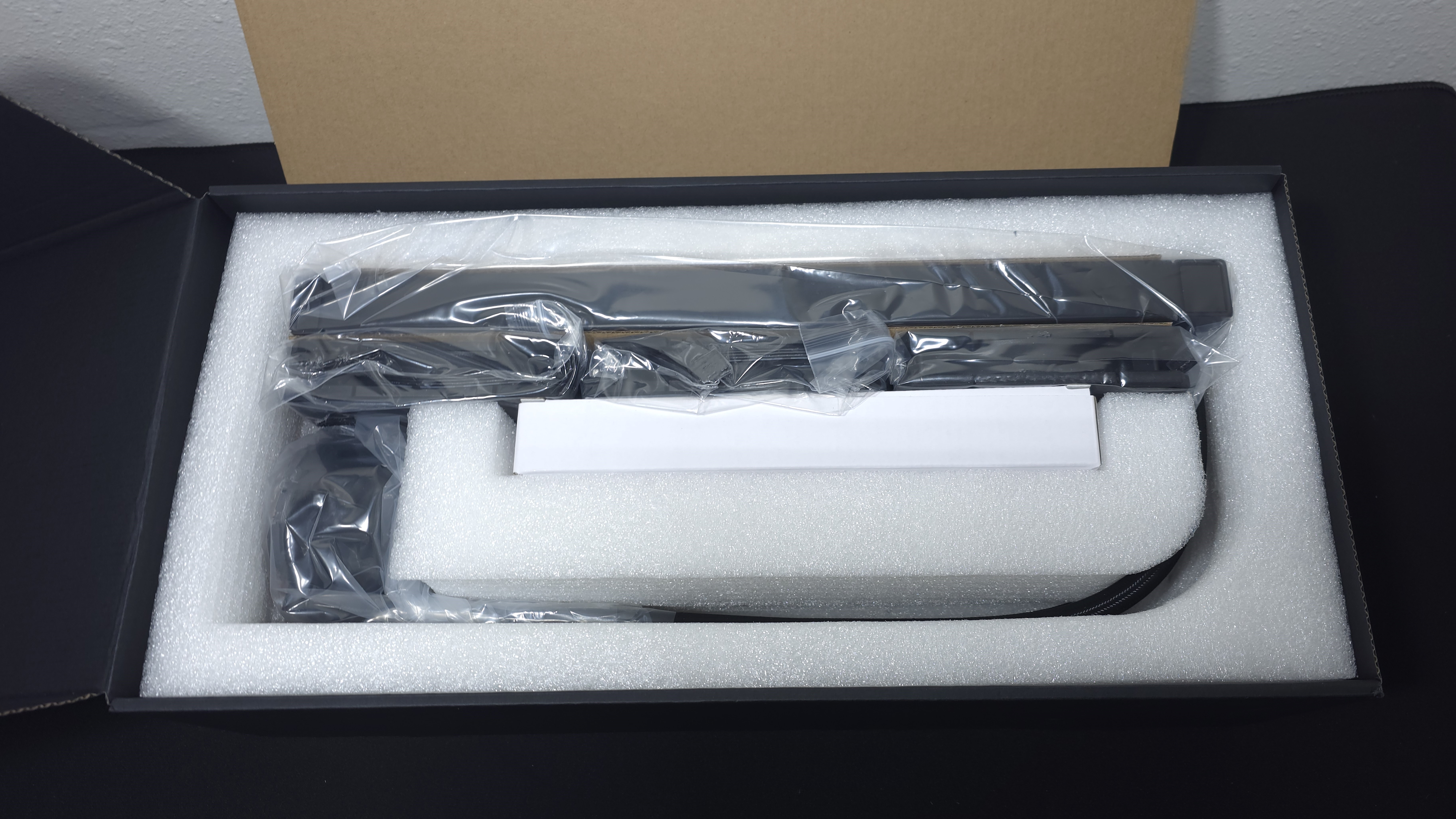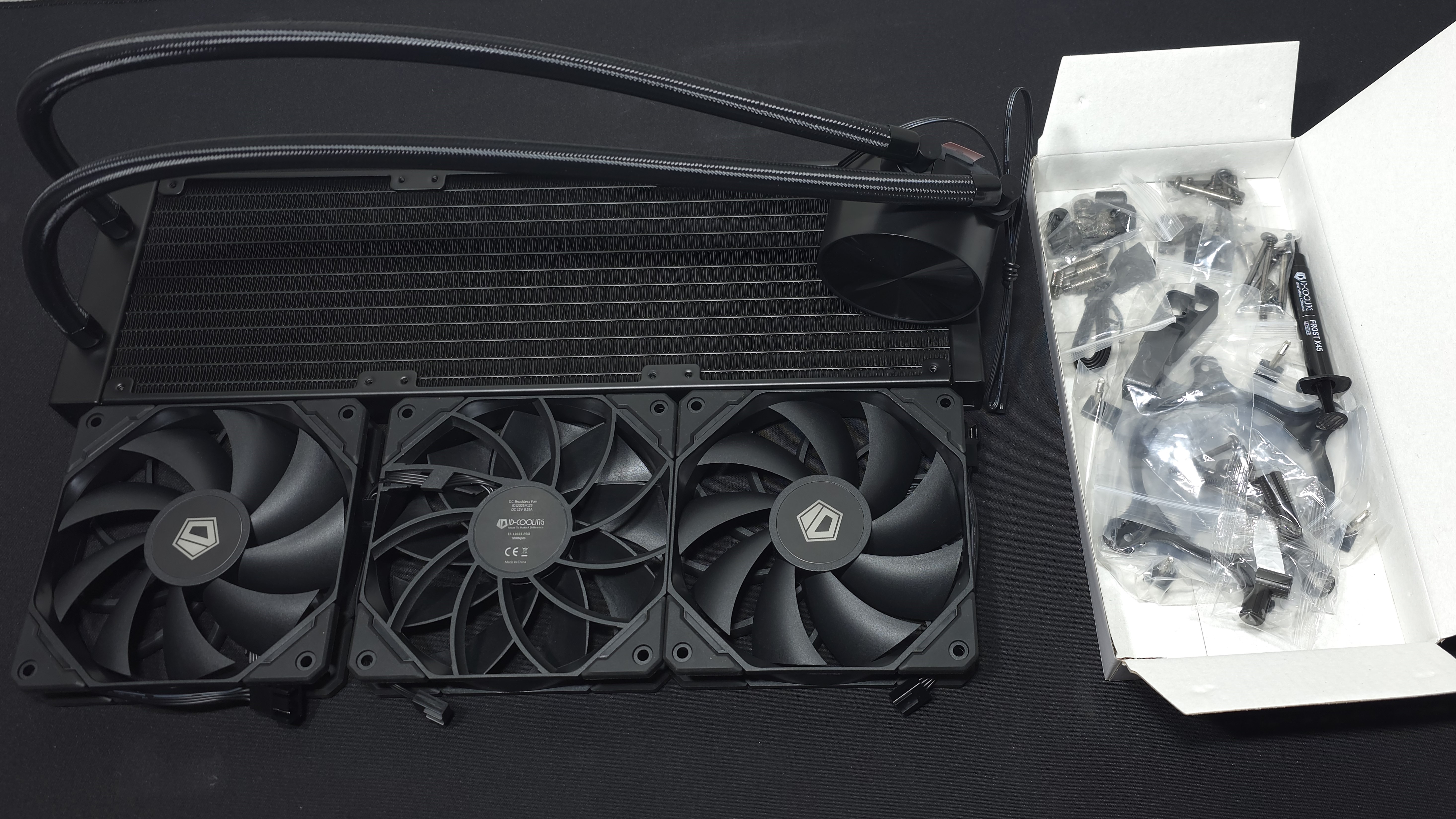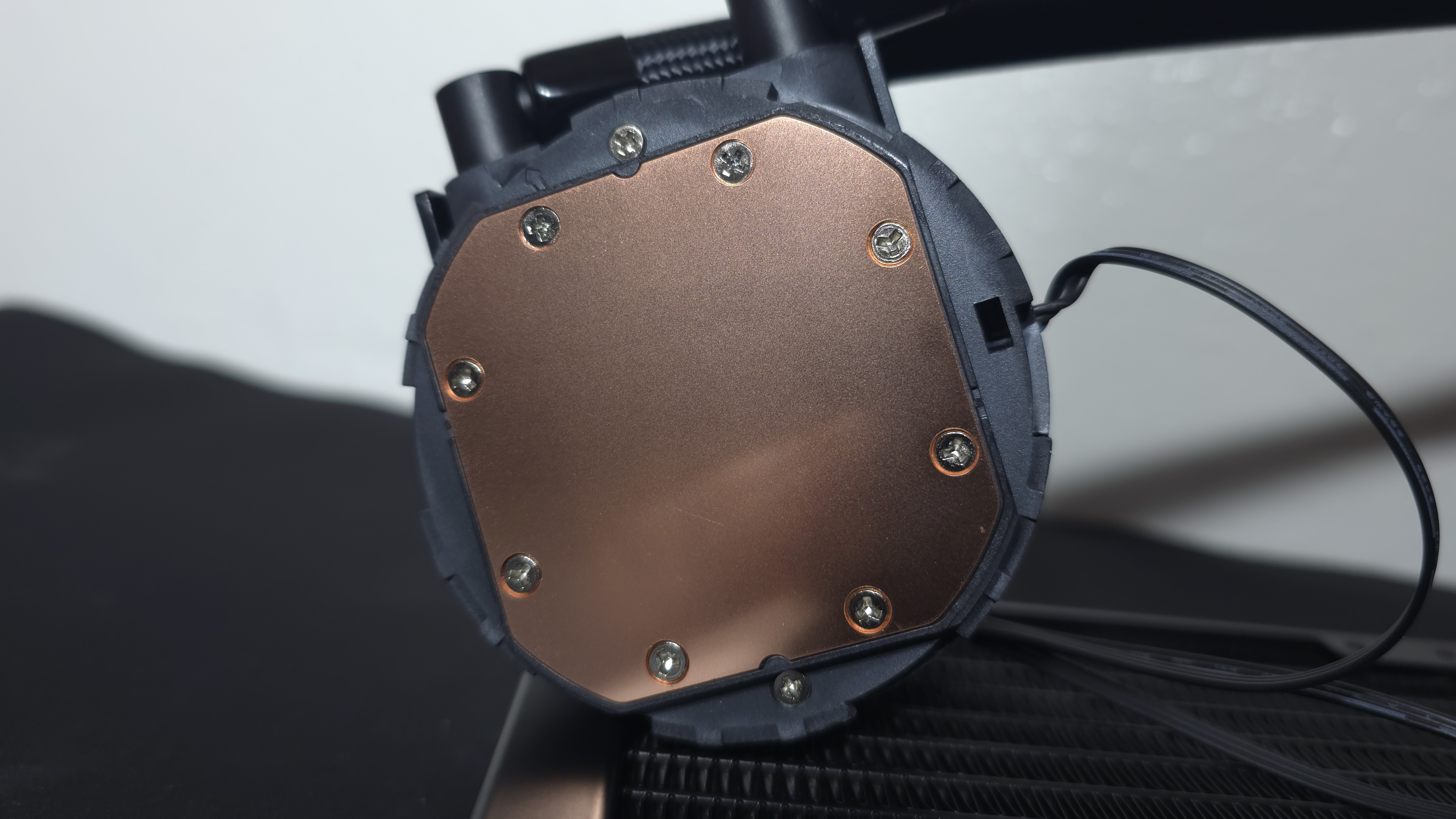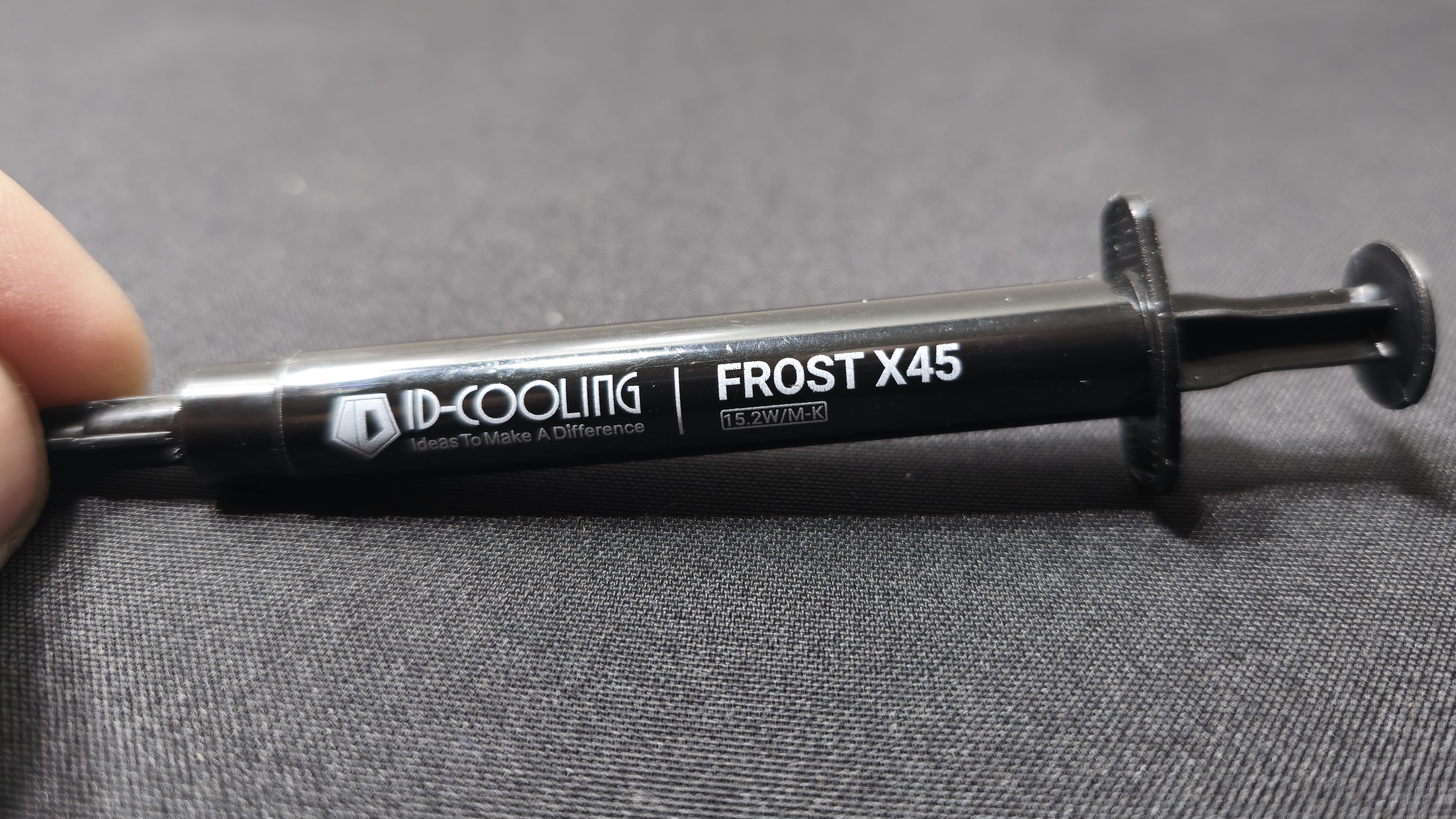Tom's Hardware Verdict
For only $60 USD, ID Cooling’s FX 360 Pro delivers very good performance and is a great value.
Pros
- +
Top-tier cooling performance
- +
Simple “old school” jet-black aesthetic
- +
Strong noise-normalized performance
- +
Insanely cheap price of $60 USD
Cons
- -
None apparent
Why you can trust Tom's Hardware
The AIO liquid cooler market has become much more competitive in the past year or so, resulting in stronger products available for lower prices than ever. Over the past year, top-performing AIOs have been available for as low as $120 USD. Today we’ll be covering ID-Cooling’s latest 360mm AIO, the FX360 Pro, which is available for only $60 – a price lower than many high-end air coolers.
With such a budget price tag, I have to wonder if it’s actually strong enough to tame a hot CPU like Intel’s i7-13700K. Does the FX 360 Pro have what it takes to earn a spot on our best AIO coolers list? We’ll have to put it through testing to find out. But first, here are the specifications from ID-Cooling.
Cooler specifications
| Cooler | ID-Cooling FX 360 Pro |
| MSRP | $59.99 USD |
| Heatsink Material | Aluminum |
| Rated Lifespan | Unlisted |
| Socket Compatibility | Intel Socket LGA 1851/1700/1200/115x/20xx AMD AM5 / AM4 |
| Base | Copper |
| Max TDP (Our Testing) | ~250W with Intel’s i7-13700K |
| Installed Size (with fans) | 397mm (L) x 52 mm (W) x 120mm (D) |
| Warranty | 3 years |
Packing and included contents
The packaging of the AIO incorporates molded foam, plastic coverings, and cardboard to protect the contents.
Included in the box are the following:
- 360mm radiator and CPU block
- Three 120mm fans
- Mounting for modern AMD and Intel Platforms
- Frost X45 Thermal Paste
- Cable management clips
Features of ID-Cooling’s FX 360 Pro
▶ Budget $60 USD MSRP
The most impressive feature of this cooler is the price – at only $59.99 in the US, it’s cheaper than many high-end air coolers and less than half the price of most competing liquid coolers.
▶ Fully rotatable, braided tubing and full RAM compatibility
Get Tom's Hardware's best news and in-depth reviews, straight to your inbox.
As an AIO does not interfere or overhang DIMM slots in any manner, all sizes of RAM, no matter how tall, are compatible with ID-Cooling’s FX360 Pro. The tubes of the of the AIO are braided and are fully rotatable for ease of installation and setup.
▶ 27mm thick radiator
The radiator included with the liquid cooler is 27mm, typical of most units currently on the market.
▶ Three Year Warranty
Despite its budget price of only $60 USD, the FX 360 Pro is backed against failures with a three year warranty.
▶ Large copper CPU base
The base of the unit is large and comprised of copper to facilitate thermal transfer.
The top of the CPU black features a reflective black etched metal design.
▶ Frost X45 Thermal Paste
Included with the AIO is a tube of ID-Cooling’s new premium thermal paste, Frost X45. The thermal conductivity of this paste is advertised at 15.2W/M-K. We’ll be taking a look at this paste in more detail in our upcoming refreshed thermal paste tests.
I say this on almost every cooler review, but there’s more to a cooler than just the heatsink or radiator. The bundled fans have a significant impact on cooling and noise levels, as well as how the cooler looks in your case.
| Model | TF-12025-PRO |
| Dimensions | 120 x 120 x 25mm |
| Fan Speed | 500-1800 RPM ± 10% |
| Air Flow | Up to 82.5 CFM |
| Air Pressure | Up to 2.55 mmH2O |
| Bearing Type | Hydraulic Bearing |
| Lighting | None |
| MFFT | Unlisted |
▶ Cable Management Clips
Included are three plastic cable management clips to keep the AIO’s tubing tidy.
LGA1700 Socket Bending
There are many factors other than the CPU cooler that can influence your cooling performance, including the case you use and the fans installed in it. A system's motherboard can also influence this, especially if it suffers from bending, which results in poor cooler contact with the CPU.
In order to prevent bending from impacting our cooling results, we’ve installed Thermalright’s LGA 1700 contact frame into our testing rig. If your motherboard is affected by bending, your thermal results will be worse than those shown below. Not all motherboards are affected equally by this issue. I tested Raptor Lake CPUs in two motherboards. And while one of them showed significant thermal improvements after installing Thermalright’s LGA1700 contact frame, the other motherboard showed no difference in temperatures whatsoever! Check out our review of the contact frame for more information.
Testing Methodology, and how my testing differs vs the competition
My previous review of Arctic’s Liquid Freezer III AIOs was quite controversial, and it made me realize that I need to better explain my testing methodology.
My cooler testing is specifically designed to emulate the conditions a user would actually experience when using a computer. Some reviewers test coolers using an open bench. I do not like this method, it reduces cooling difficulty. When you use a case, the internal temperature of that case will become higher than that of the room’s ambient temperature, increasing the saturation of the cooler and overall cooling difficulty. Testing outside of a case will give an advantage to weaker coolers, especially those with fans that aren’t very strong.
Others test using a thermal heatplate. This method suffers from all the drawbacks of an open bench, but also doesn’t accurately represent cooling a CPU. A thermal plate evenly distributes a thermal load across the copper heat conduction square. The problem with this type of testing is that modern AMD Ryzen and Intel Core CPUs have most of their heat concentrated in a few hotspots – and cooling a concentrated source of heat is more difficult than cooling a source that’s spread evenly.
In discussions with industry representatives, one manufacturer (who wishes to remain anonymous) mentioned that in the past they once used heat plates in a thermal chamber during their design process, until they realized that method of testing was “giving us nice TDP numbers to print on the box, but is not reflective of the user experience at all.” They mentioned that switching to tests using real CPUs increased their testing time, but also provided valuable data to help improve their products. An example they provided is that this testing allowed them to properly observe “differences between AMD and Intel systems, which we can then address.”
The last thing I do differently from some cooler testers is that I insist on using relatively new CPUs for cooler testing, because people building new PCs should be using recent CPUs. Also, thermal density is just different with newer CPUs. Products like Ryzen 3000 “Zen 2” and older 14nm Intel CPUs have lower heat density compared to modern counterparts, due to a combination of using older manufacturing processes and running at lower clock speeds. Using a weaker cooler with an older CPU can make the cooler look better performing than it actually is with current-gen silicon.
Today's highest-end CPUs, whether Intel or AMD, are difficult to cool in intensive workloads. In the past. reaching 95 degrees Celsius or more on a desktop CPU might have been a cause for concern. But with today’s top-end CPUs, this is considered normal operation. Similar behavior has been present in laptops for years due to cooling limitations in tight spaces.
All testing is performed with a 23C ambient room temperature. Multiple thermal tests are run on each CPU to test the cooler in a variety of conditions, and acoustic measurements are taken with each result. These tests include:
1. Noise-normalized testing at low noise levels
2. “Out-of-the-box”/default configuration thermal & acoustics testing
a. No power limits enforced
b. Because CPUs hit TJMax in this scenario, the best way to compare cooling strength is by recording the total CPU package power consumption.
3. Thermal & acoustic testing in power-limited scenarios
a. Power limited to 175W to emulate a medium-intensity workload
b. Power limited to 125W to emulate a low-intensity workload
The thermal results included are for 10-minute testing runs. To be sure that was sufficiently long to tax the cooler, we tested both Thermalright’s Assassin X 120 R SE and DeepCool’s LT720 with a 30-minute Cinebench test with Intel’s i9-13900K for both 10 minutes and 30 minutes. The results didn’t change much at all with the longer test: The average clock speeds maintained dropped by 29 MHz on DeepCool’s LT720 and 31 MHz on Thermalright’s Assassin X 120 R SE. That’s a very small 0.6% difference in clock speeds maintained, a margin of error difference that tells us that the 10-minute tests are indeed long enough to properly test the coolers.
Testing configuration – Intel LGA1700 platform

Albert Thomas is a contributor for Tom’s Hardware, primarily covering CPU cooling reviews.
-
colossusrage Thermalright has a $55 and $65 360MM AIO. I just bought the more expensive one to replace a Peerless Assassin, haven't hooked it up yet, but the build quality feels legitimate.Reply -
thestryker I think in this price range I'd go for Thermalright as they have a longer warranty and given how long they've been in the industry trust them to still be around to potentially honor it.Reply -
namtrooper81 I used to own the Noctua NH-D15, but I had clearance issues when I got the Eiswolf 2 AIO cooler for my 6800xt. So I replaced it with a very affordable ID-Cooling 360 radiator AIO for my cpu. I have been very happy this far with it. None of the bling with good performance and a solid price. Everything I like in a product.Reply -
Yankee_4tm Hello, i am using this cooler for 6 months.Reply
I am not geek in PC softs. Just could you explain me how to set its fans to 38,2 noise level?
P.s.
Bought it from China only for 40$ with no taxes. There weren't any tests on youtube or google, just bought it blinded way. It worked. -
das_stig They are not the only company doing AIO in that price range, some even have RGB if want it, have to say if I was in the market for a new cooler, I would give these a go.Reply -
Yankee_4tm BReply
Bro, my question wasnt that. I know what their company do. And i took my one from official store in their motherland China. But i asked for another thingdas_stig said:They are not the only company doing AIO in that price range, some even have RGB if want it, have to say if I was in the market for a new cooler, I would give these a go. -
colossusrage Reply
Use the fan control settings in your BIOS. There's usually some sort of quiet mode or you can set it manually.Yankee_4tm said:Hello, i am using this cooler for 6 months.
I am not geek in PC softs. Just could you explain me how to set its fans to 38,2 noise level?
P.s.
Bought it from China only for 40$ with no taxes. There weren't any tests on youtube or google, just bought it blinded way. It worked. -
Yankee_4tm Reply
Yes, i can use fan control like 50% power when 30C etc, 70%-50C. But i dont know how to fix it to exact noise level. Is that fix being by fan control soft or i need tester and do it manually?colossusrage said:Use the fan control settings in your BIOS. There's usually some sort of quiet mode or you can set it manually. -
Roland Of Gilead They are so much cheaper as they sell most of their stock directly to consumers through ebay. They cut out the middle man and ship direct.Reply
I've an ID Frostflow 240l and it's solid. 3 years in, keeping my 5600x chilled as can be. Temps typically, Idle - 30c, Game - 45-65, Load - 70-75c. It's cooling as good as they day it was installed.
Now, of course, I know the lifespan of AIO's are shorter (approx up to 5 yrs), so I'm expecting to replace it within a year or two.








